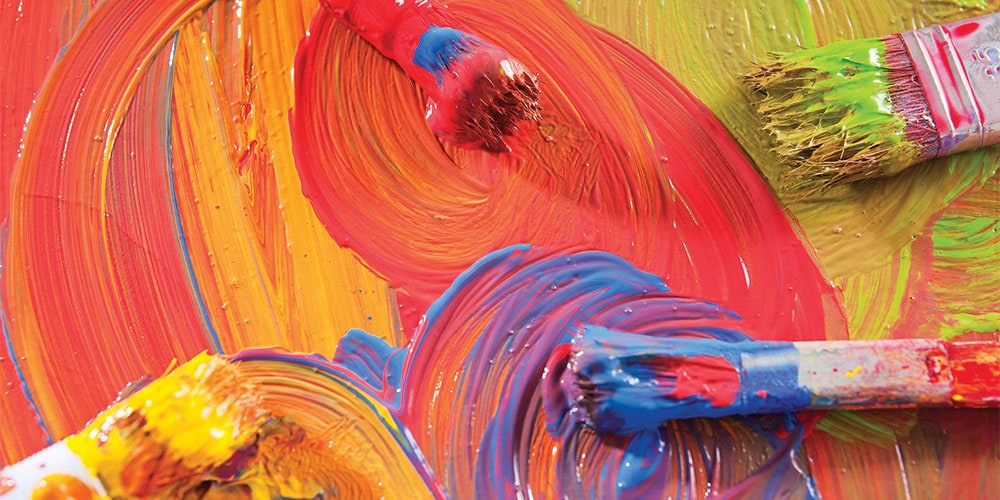
With the influx of popular media encouraging a culture of excessively busy but passive consumers, many of us feel bombarded and disjointed. As scientific evidence continues to mount, it appears that creativity is one of the keys to unlocking well-being and wholeness.
We are all born creative. God hardwired creativity into our DNA. All of us have a divinely inspired impulse to create. The Bible tells us: “So God created mankind in his own image, in the image of God he created them; male and female he created them” (Gen. 1:27).
When we create in divinely inspired ways, it pleases God, because He sees us reflecting His image, and He loves to see His image shine throughout the world. Our creativity is expressed in different ways and to varying degrees, even if we aren’t born with a genetic bent to a particular talent.
More important than talent is the willingness to explore what interests us. As we nurture our creativity we develop a part of ourselves that is innate, and this gives us the freedom to express our untapped attributes, stimulate our minds, and heighten our sense of well-being.
Creativity is about expression and trying new things. It involves imagination; originality; and the ability to challenge, question, and explore; take risks; play with ideas; and keep an open mind. The creative process is more important than the product or tangible results. This makes creativity accessible to anyone, because it’s central to the journey of discovery rather than the final product. It helps us flourish by teaching us about who we are, what we love, and what we can give to the world.
Ruth Richards, psychology professor at Saybrook University, says engaging in creative behaviors “makes us more resilient, more vividly in the moment, and, at the same time, more connected to the world.”1
In 2010 the American Journal of Public Health published a review entitled “The Connection Between Art, Healing, and Public Health.”2 Researchers analyzed more than 100 studies about the impact of art on health. The studies included everything from music and writing to dance and the visual arts.

Each study examined more than 30 patients battling chronic illness and cancer. The researchers described the benefits, saying:
“Art filled occupational voids, distracted thoughts of illness.”
“Improved well-being by decreasing negative emotions and increasing positive ones.”
“Improved medical outcomes, trends toward reduced depression.”
“Reductions in stress and anxiety; increases in positive emotions.”
“Reductions in distress and negative emotions.”
Fostered “improvements in flow and spontaneity, expression of grief, positive identity, and social networks.”3
While therapy and psychotherapy have proven benefits, creative therapies are successful in ways that differ from traditional therapies. Throughout the past decade psychologists have begun looking at how the arts might be used in various ways to heal emotional injuries, develop a capacity for self-reflection, reduce stress, and alter behavior and thinking patterns.
Involvement in creative arts helps people become more communicative. A greater awareness of our need for expression brings impetus for change. Creative therapies are used to further the emotional, mental, physical, spiritual, and social integration of a person. This can involve music, art, writing, and other creative activities. It allows individuals to solve conflicts, manage behavior, improve self-esteem, develop self-awareness and insight, and develop interpersonal skills.
Artistic expression and our worship of God can be accomplished through all works of art, including painting, drawing, crafts, sculpting, photography, writing, and drama. Worshipping God through art is about creating something for the Lord and opening yourselvesf up to God’s beauty and holiness.
Creative physical activities benefit the mind and body by releasing endorphins, and act as a healing tool by relieving stress and anxiety. They can also be a form of worship: “Let them praise his name with dancing and make music to him with timbrel and harp” (Ps. 149:3).
Music is the most accessible medium of art and healing. Ellen White wrote that music is “one of the most effective means of impressing the heart with spiritual truth”4 “Rightly employed, [music] is a precious gift of God, designed to uplift the thoughts to high and noble themes, to inspire and elevate the soul.”5
Expressive writing can improve control over pain, pain severity, and depression. Psychologist James Pennebaker wrote, “There is little doubt that writing has positive cognitive consequences, and self-report studies suggest that writing about upsetting experiences produces long-term improvements in mood and health.”6
The benefits of creativity—physically, mentally, emotionally, socially, and spiritually—are numerous:

Creativity, imagination, and innovation usually find us during moments of play. Play is a child’s natural medium of self-expression. Crafting or drawing alongside children, who take such joy in the pure act of creating, can inspire us to see creativity as fun and enjoyable. Spending time in nature can also inspire creativity as well as boost mood by reducing the stress hormone cortisol and instilling confidence and peace of mind.
Joining a group of like-minded “creatives” can also nurture the imagination. Interacting with others who share similar artistic passions sparks our own creativity.
Try exposing yourself to new creative stimuli to open your thinking. Take walks in nature, listen to music, and study paintings and photographs. The creative journey brings us closer to our deepest nature.
Julie Guirgis is a freelance writer who lives with her family in Sydney, Australia.